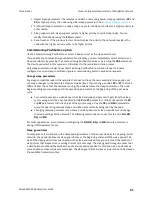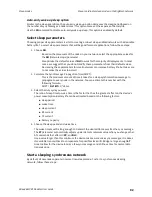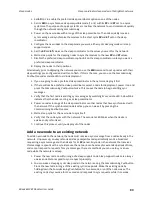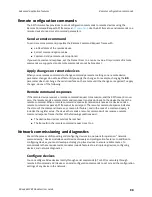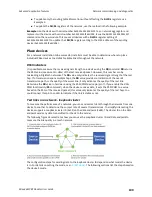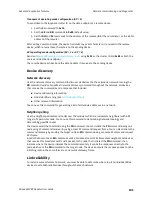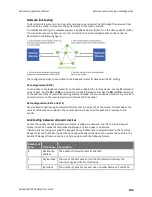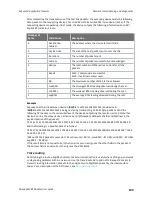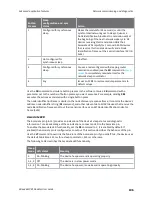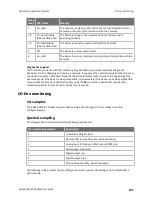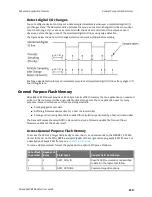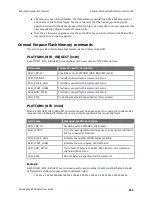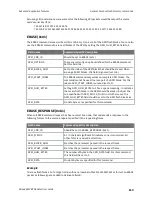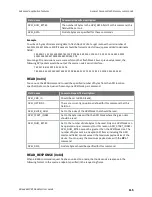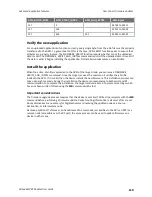
Advanced application features
Network commissioning and diagnostics
XBee 868LP RF Modules User Guide
104
When a unicast is sent with the Trace Route API option enabled, the unicast is sent to its destination
radios which forward the unicast to its eventual destination and transmit a Route Information (RI)
packet back along the route to the unicast originator. For more information, see API operating mode.
Example
:
Suppose you unicast a data packet with the trace route enabled from radio A to radio E, through
radios B, C, and D. The following sequence occurs:
n
After the successful MAC transmission of the data packet from A to B, A outputs an RI Packet
indicating that the transmission of the data packet from A to E was successfully forwarded one
hop from A to B.
n
After the successful MAC transmission of the data packet from B to C, B transmits a RI Packet
to A. Then, A outputs this RI packet out its serial interface.
n
After the successful MAC transmission of the data packet from C to D, C transmits a RI Packet
to A (through B). Then, A outputs this RI packet out its serial interface.
n
After the successful MAC transmission of the data packet from D to E, D transmits an RI Packet
to A (through C and B). Then, A outputs this RI packet out its serial interface.
Route Information packets are not guaranteed to arrive in the same order as the unicast packet took.
It is also possible Route Information packets that are transferred on a weak route to fail before
arriving at the unicast originator.
Because of the large number of Route Information packets that can be generated by a unicast with
Trace Route enabled, we suggest that the Trace Route option only be used for occasional diagnostic
purposes and not for normal operations.
NACK messages
Transmit Request (0x10 and 0x11) frames contain a negative-acknowledge character (NACK) API
option (Bit 2 of the Transmit Options field).
If you use this option when transmitting data, when a MAC acknowledgment failure occurs on one of
the hops to the destination device, the device generates a Route Information Packet (0x8D) frame
and sends it to the originator of the unicast.
This information is useful because it allows you to identify and repair marginal links.
Commissioning pushbutton and associate LED
XBee devices support a set of commissioning pushbutton and LED behaviors to aid in device
deployment and commissioning. These include the commissioning push button definitions and
associate LED behaviors. The following features can be supported in hardware:


